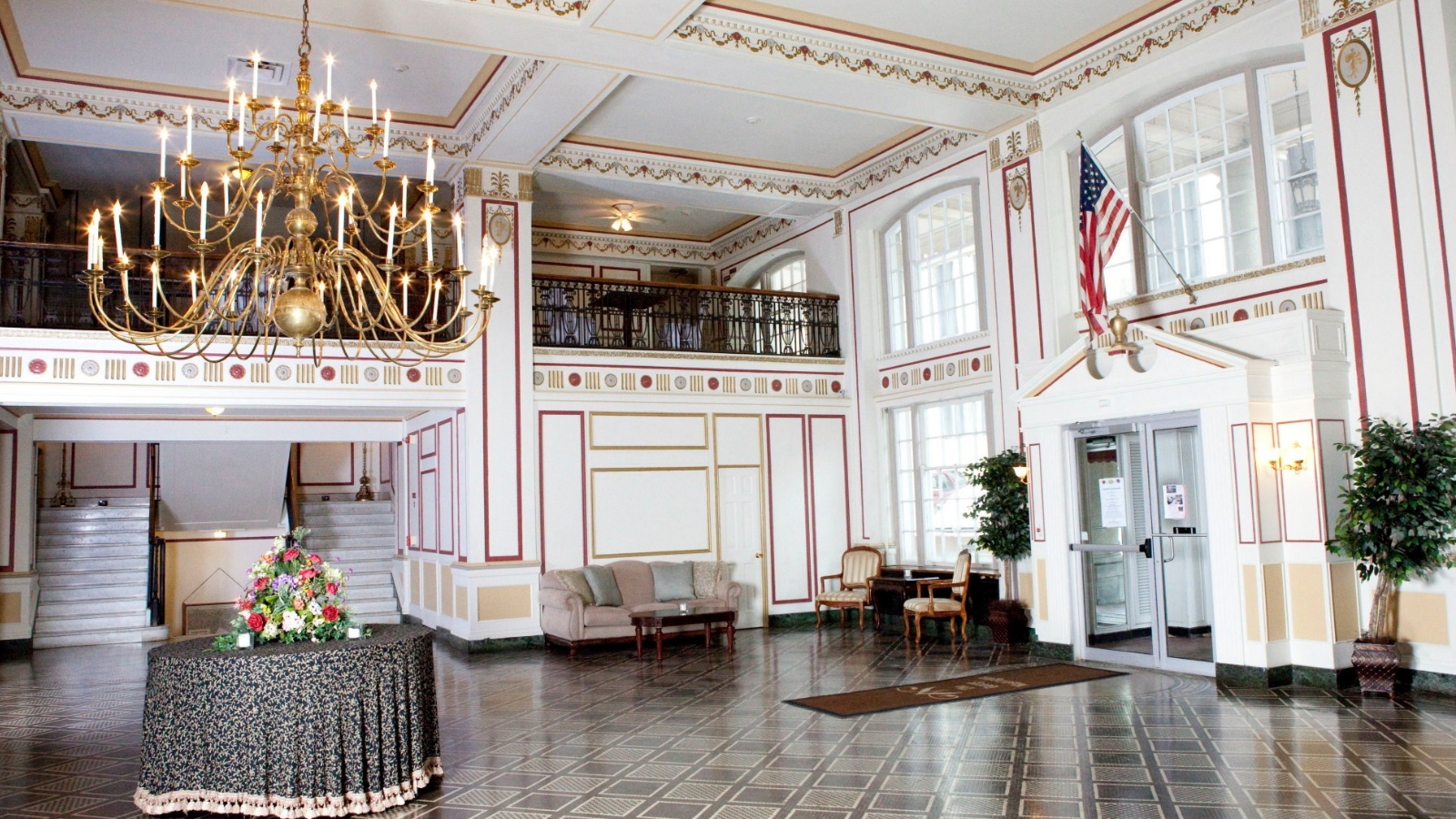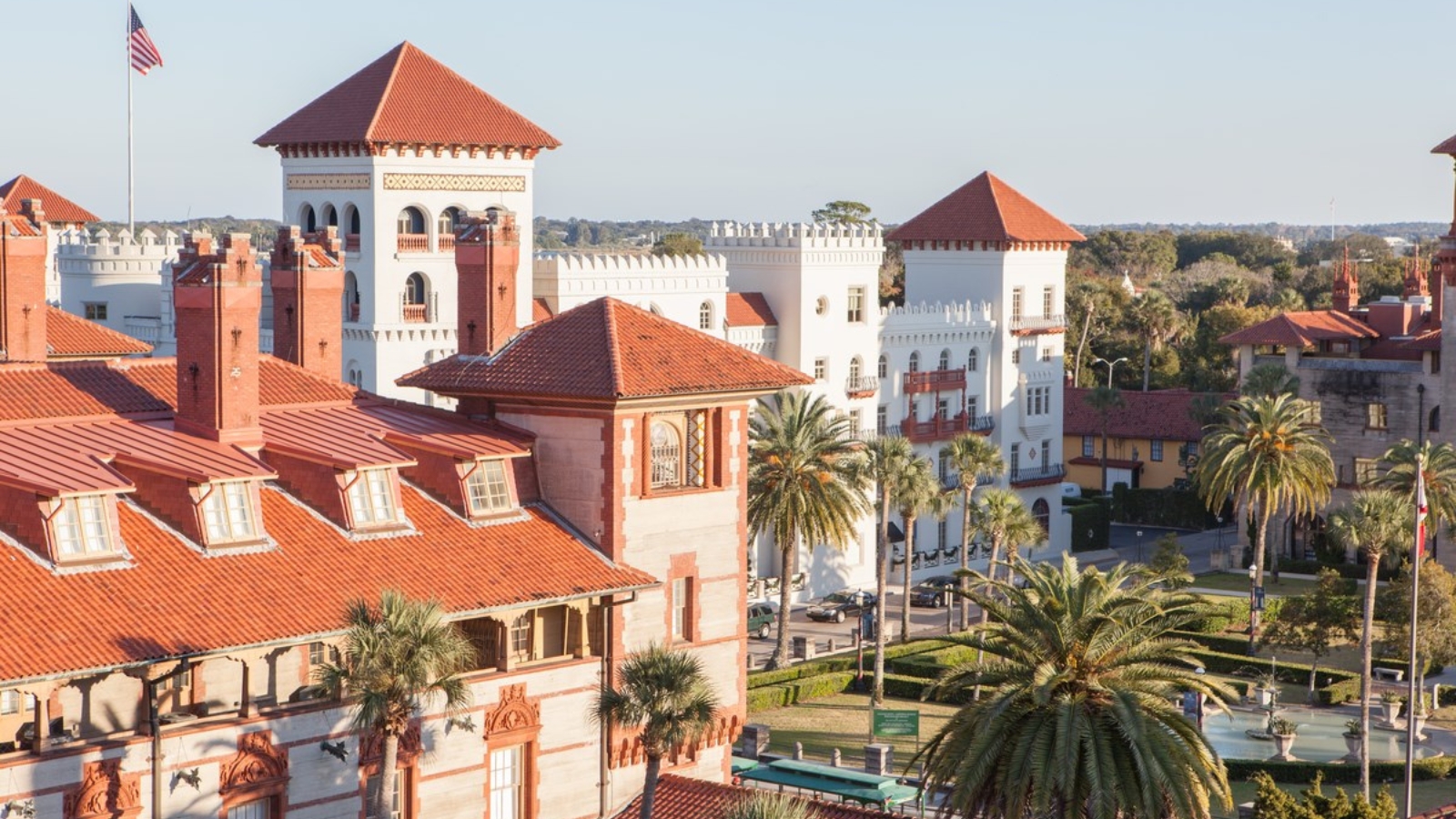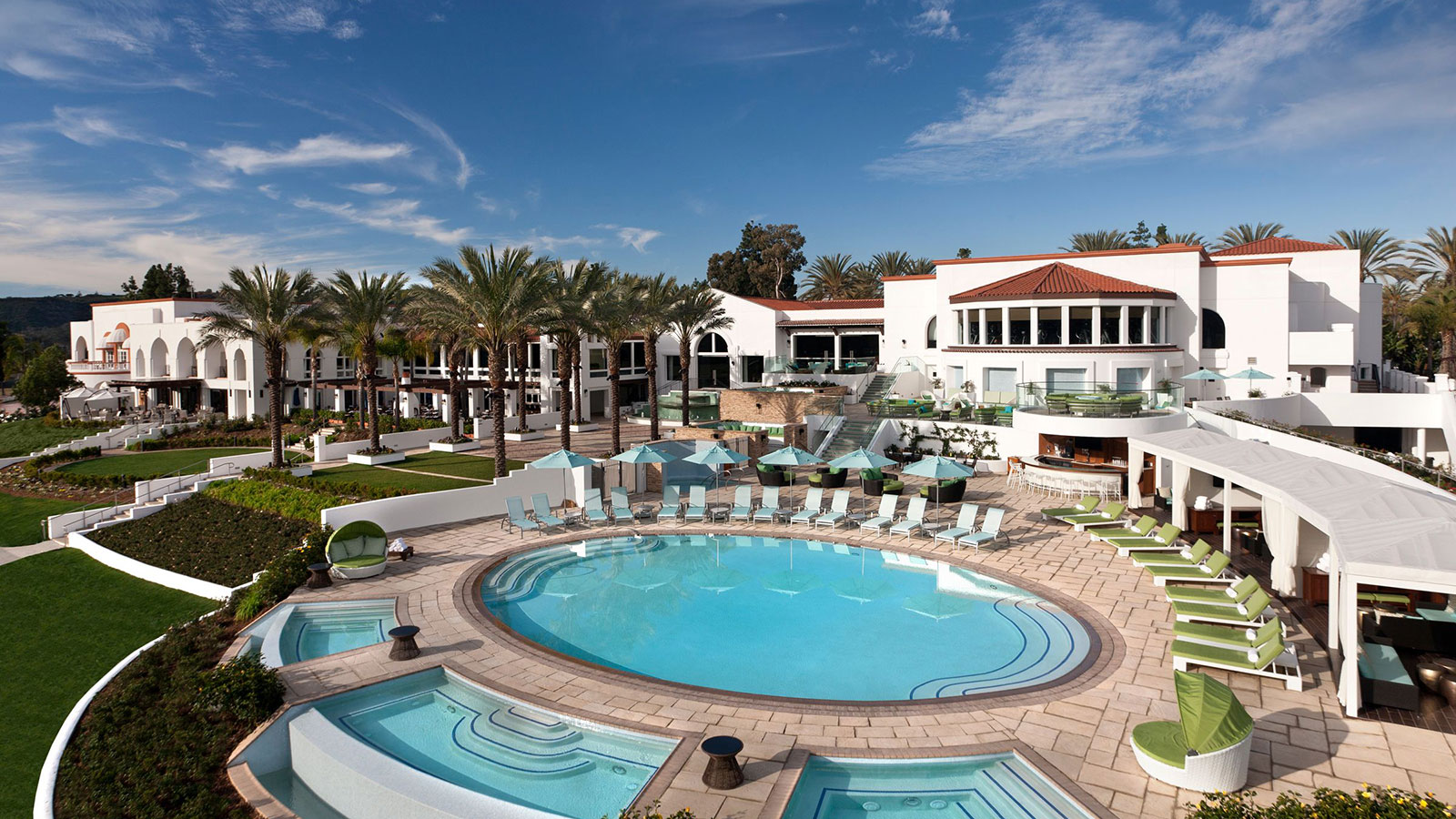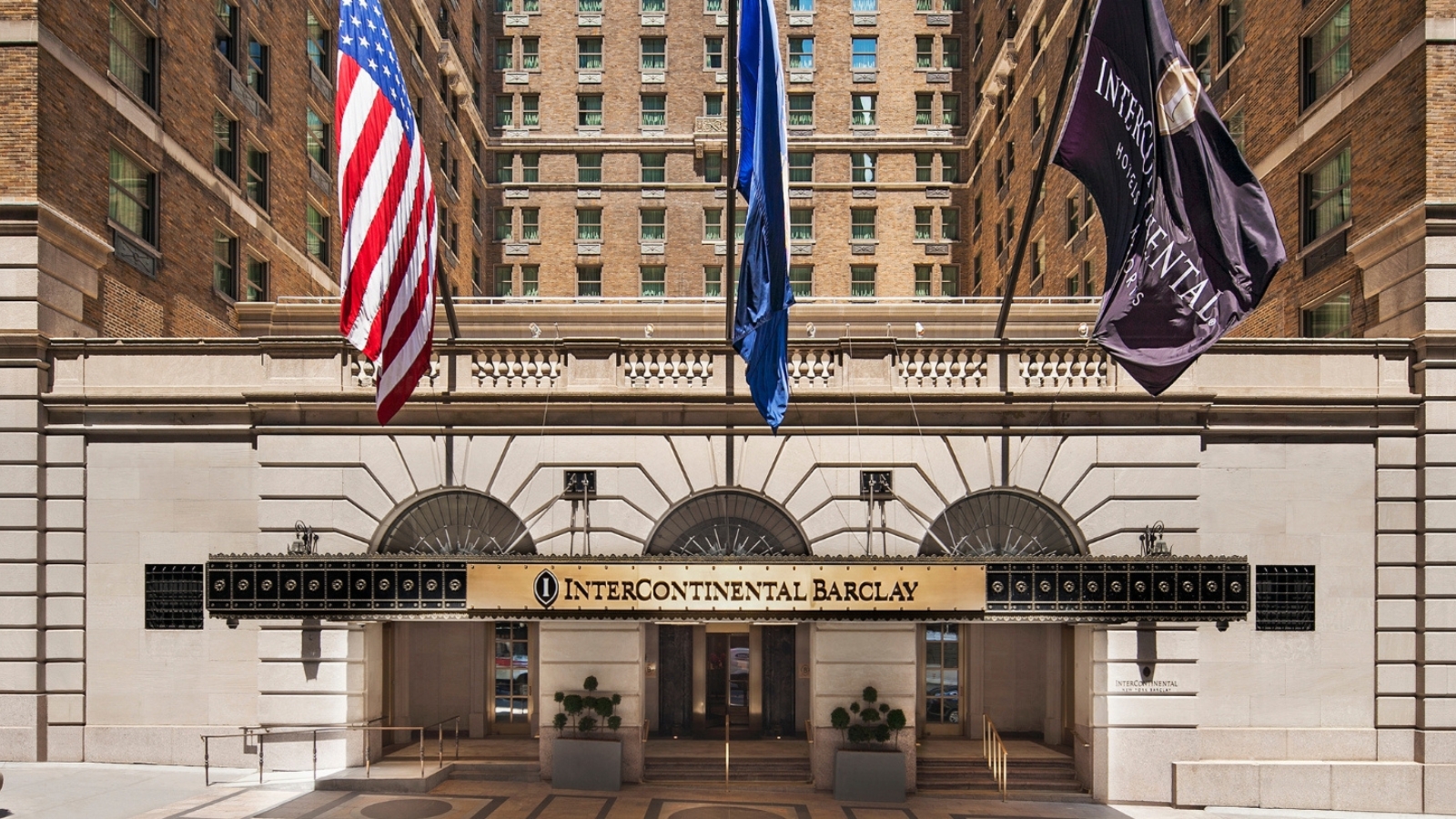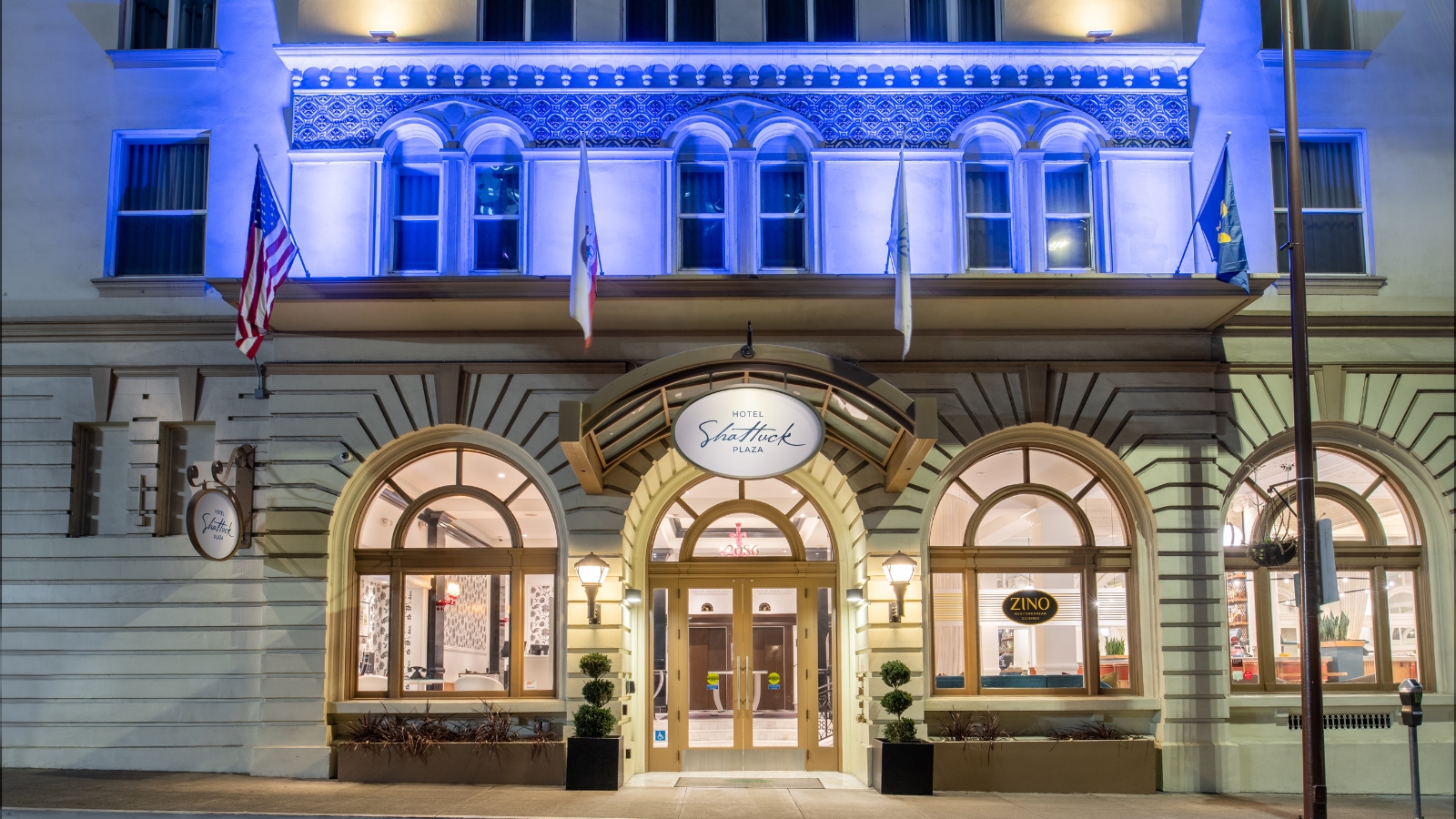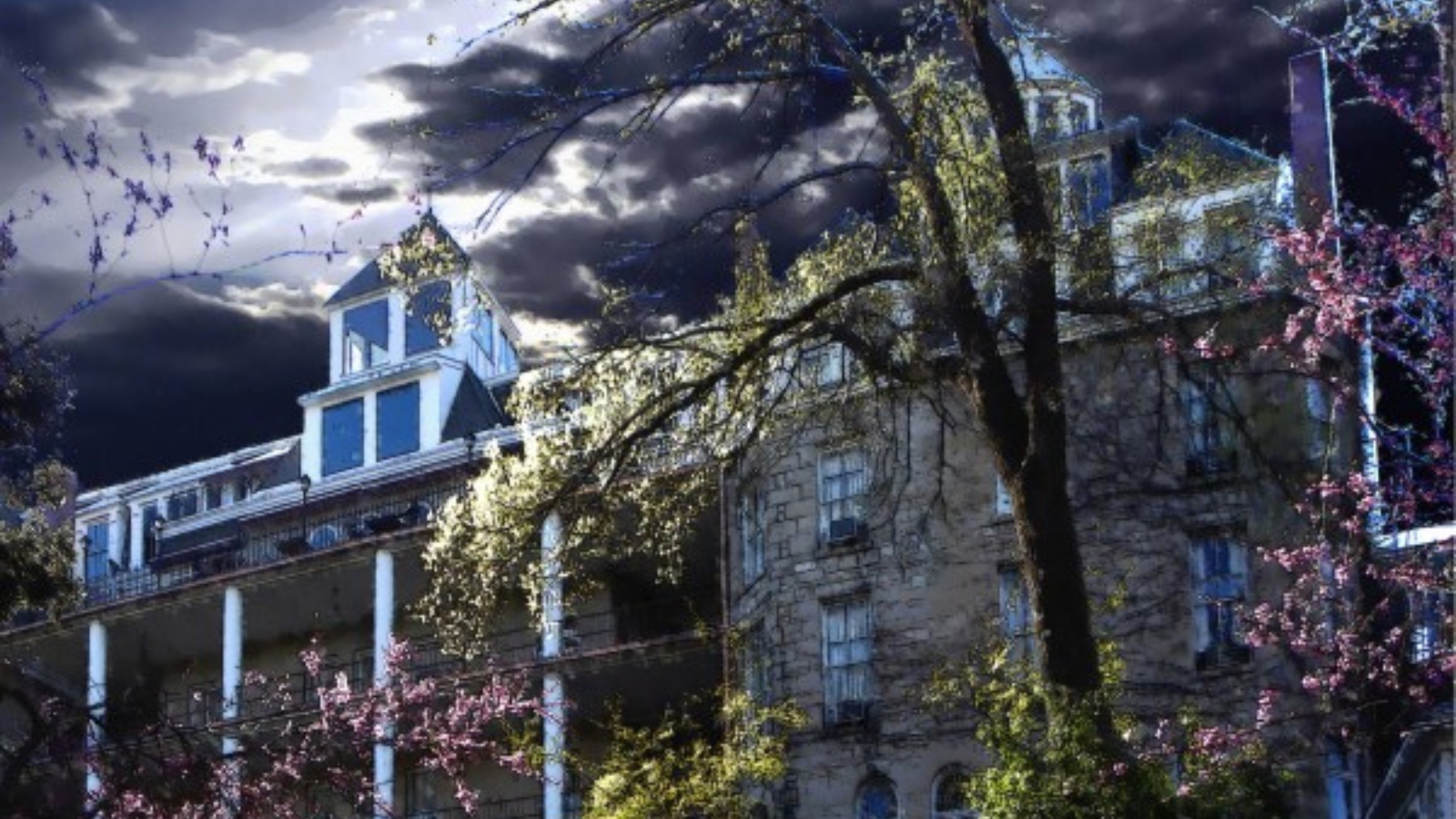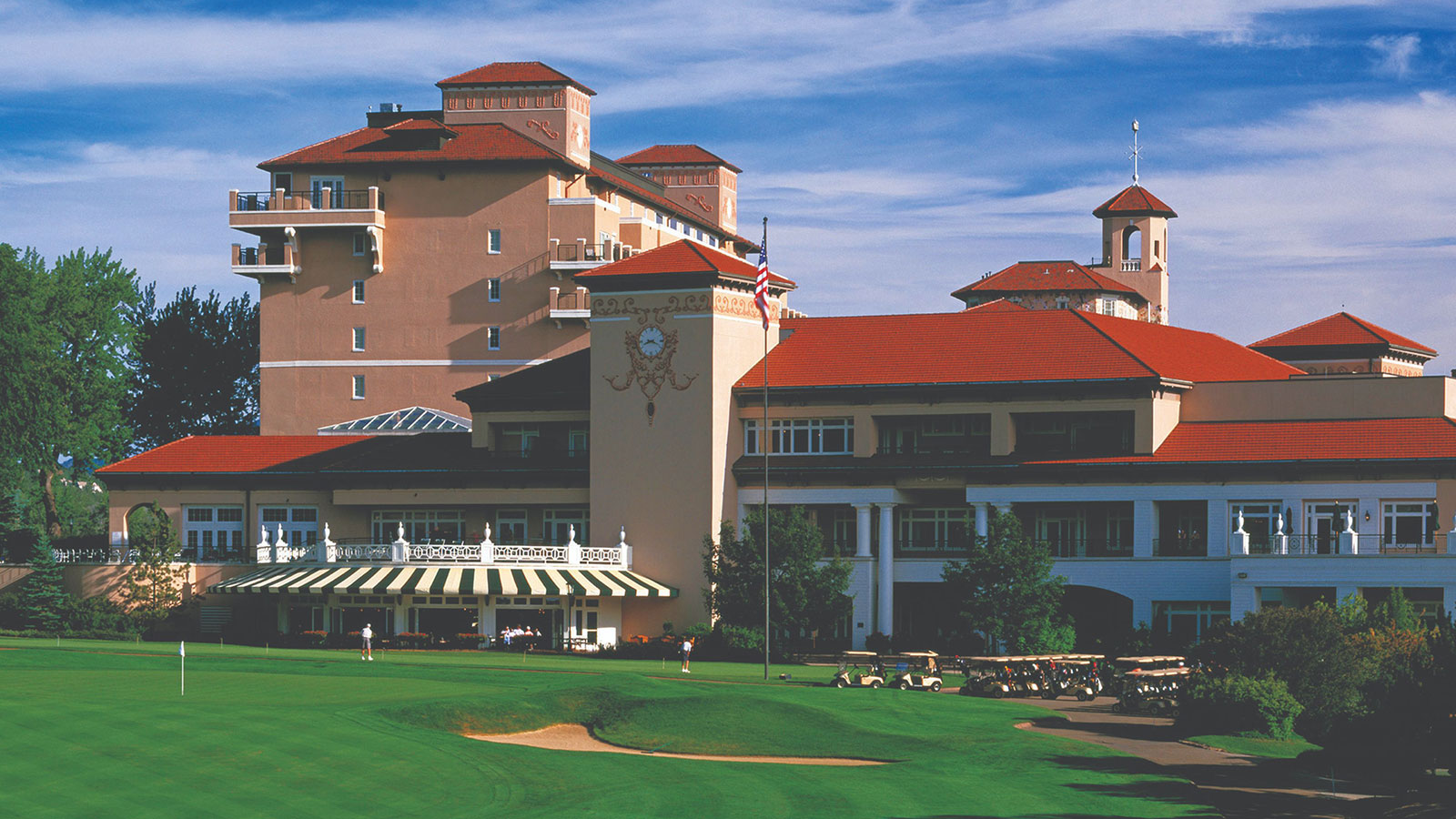Receive for Free - Discover & Explore eNewsletter monthly with advance notice of special offers, packages, and insider savings from 10% - 30% off Best Available Rates at selected hotels.
The 2023 Top 25 Historic Hotels of America® Most Magnificent Art Collections List Is Announced

The 2023 Top 25 Historic Hotels of America® Most Magnificent Art Collections List Is Announced
Sign up to receive future news, highlights, and advance notice of special offers from Historic Hotels of America®.
The Omni Homestead Resort (1766)
Hot Springs, Virginia
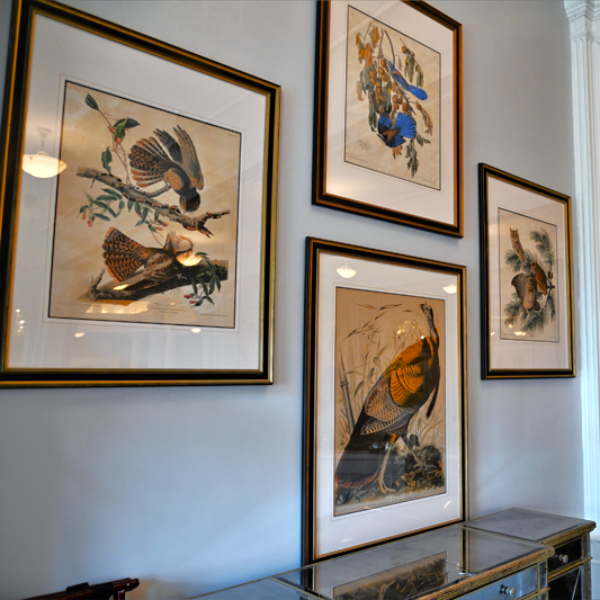 |
The art collection at The Omni Homestead Resort in Hot Springs, Virginia, includes approximately 138 pieces of original art. Most notable is its John James Audubon collection: eighteen first-edition art prints, published in The Birds of America in London between 1827 and 1838, and displayed today in the main dining room. These pieces are engraved with aquatint and hand-colored on wove paper by R. Havell, set within a French mat under UV-protected glass. A wide variety of bird species are depicted in various forms and actions. The Ingalls family, who owned and developed the resort between the late 19th and early 21st centuries, acquired the collection for The Homestead in the early 1900s. In addition to the Audubon collection, the Resort displays original artwork by artists including oil paintings of the Old Course by Andras Bality; 20 pieces from W.H. Lee Baskerville, whose painting of the Jefferson Pools can be found in the hotel lobby; 23 realist-style portraits from Paul Bertholet, depicting the Presidents who visited the hotel between 1789 and 2009; and four works by plein-air artist Ed Hatch, whose work depicts Virginia’s countryside and can be viewed within the Warm Springs Pools Gallery. The Omni Homestead Resort is a charter member of Historic Hotels of America, inducted in 1989, and it was designated a National Historic Landmark by the U.S. Secretary of the Interior. |
Louisville, Kentucky
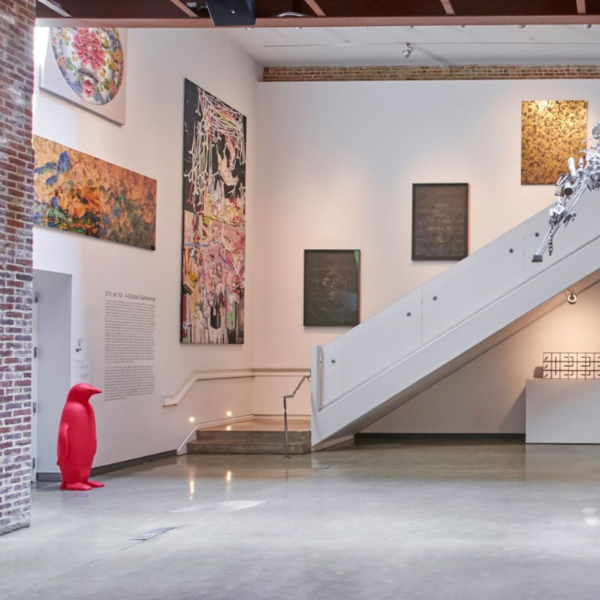 |
The 21c Museum Hotel Louisville in Louisville, Kentucky, was the first of the 21c Museum Hotels, founded in 2006 by contemporary art collectors Laura Lee Brown and Steve Wilson. They began collecting at the turn of the 21st century and founded the 21c Museum Hotel Louisville with the goal of making contemporary art a part of more people’s daily lives. The hotel is comprised of five formerly abandoned 19th-century warehouses located in the heart of Louisville’s West Main Street Historic District. With the buildings restored and renovated, they were converted into the 21c Museum Hotel Louisville, which was inducted into Historic Hotels of America in 2019. Visitors, tourists, and the public, as well as hotel and restaurant guests, are greeted by multiple artworks outside of 21c Museum Hotel Louisville before entering to explore the art within the building. Serkan Özkaya’s 30-foot-tall David (inspired by Michelangelo) can be seen from blocks away as guests approach the historic hotel. This oversized golden replica of Michelangelo’s David has become a popular Main Street landmark since it was installed in 2011. Another frequently photographed work at the 21c Museum Hotel Louisville is the art car Arillated: The 21c Pip Mobile that is parked outside the main entrance. Louisville artist Monica Mahoney bejeweled a 1996 Lincoln Town Car with thousands of red glass gems to resemble the interior of a pomegranate. Visitors are welcome to enjoy the art at 21c Museum Hotels 24 hours a day, 365 days per year, and can contact the hotel concierge to learn about docent tours. |
Savannah, Georgia
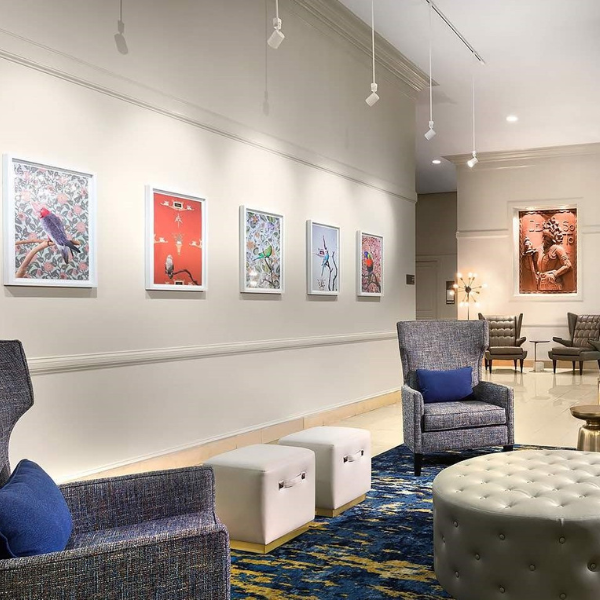 |
The DeSoto in Savannah, Georgia, displays over 40 pieces of artwork, in a variety of mediums, by artists who attended the Savannah College of Art & Design (SCAD). Located in the heart of Savannah's Historic District, The DeSoto is a member of Sotherly Hotels' collection of independent boutique hotels throughout the Southern United States. Through its Sotherly Annual Scholarship and partnership with SCAD, Sotherly Hotels invests in local artists and provides them with a space to exhibit their work. The hotel’s Sotherly Savannah College of Art & Design Gallery displays pieces created by these accomplished artists when they were emerging and attending the acclaimed SCAD, whose campus is right next door to the hotel. Notable among the works exhibited is a floor-to-ceiling mixed medium of screen printing and sculpture by Lauren Clay, who currently resides in New York. This piece is installed in the main entrance of the hotel’s lobby. Guests can also enjoy two pieces by Marcus Dunn: Luther Standing Bear in Edgar’s Proof & Provision and Going Home by Motorboat in the 1540 Room. Marcus’s work has been exhibited in various locations including the Institute of American Indian Arts Museum of Contemporary Native Arts in Santa Fe, New Mexico. Another historic Sotherly hotel, The Georgian Terrace (1911) in Atlanta, also exhibits SCAD students’ art through this partnership. |
New Paltz, New York
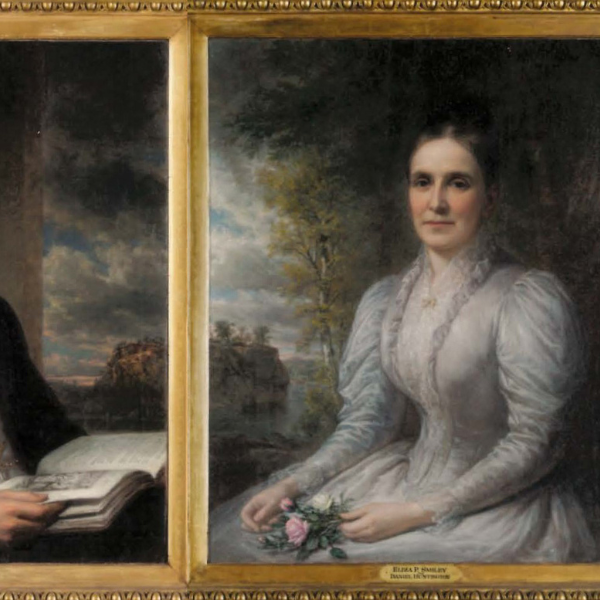 |
Mohonk Mountain House in New Paltz, New York, has an extensive art collection of over 1800 pieces that highlight artists who chose the people and the scenery of the Hudson Valley as their subjects. Many of these artists were locals or stayed as guests at Mohonk Mountain House, and the art collection speaks to the rich and robust history of the Mohonk Mountain House. The most famous artists in the Mohonk collection are Daniel Huntington and Henry Van Ingen. Huntington, a native New Yorker, first exhibited his work at the National Academy of Design in 1836, and painted landscapes in the tradition of the Hudson River School, as well as portraits. It is believed that he was the first artist to portray Mohonk Lake and its environs. Huntington also painted portraits of both Albert K. Smiley and Eliza P. Smiley—founders of the mountain resort hotel—during his time at Mohonk Mountain House. Many of the hotel’s pieces by Henry Van Ingen, including oil paintings that are exhibited in the Central Staircase and Winter Lounge, were selected by Albert K. Smiley. Each one of those pieces is curated by, and installed under, the direction of Pril Smiley, Director of Art and fourth generation descendent of the hotel’s founders. Approximately 800 pieces can be found throughout the Mohonk Mountain House hallways, public spaces, and guestrooms, to allow guests to experience the collection during their stay. A guidebook to the oil paintings is available in the Mohonk Gift Shop: Paintings at Mohonk: Visions of our Surroundings by Sanford A. Levy. The hotel also offers a free self-guided tour through its ‘Hidden Histories’ app. Hidden Histories is an augmented reality (AR) experience that will immerse guests in the history of this storied resort. When viewing the artwork through the app, guests will see the walls of the Mohonk Mountain House come to life and unlock Mohonk Stories. |
Chicago, Illinois
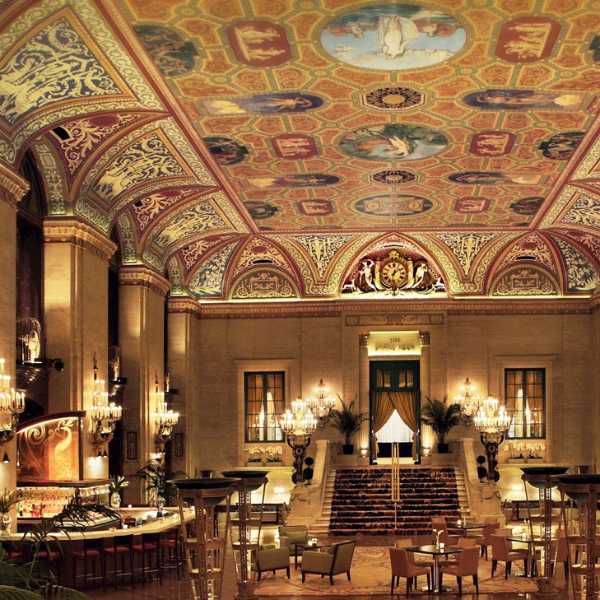 |
When guests arrive in the lobby of the Palmer House, A Hilton Hotel in Chicago, Illinois, and look up, they know that they have entered a work of art. Above them is the magnificent ceiling adorned with 21 Grecian murals by French artist Louis Pierre Rigal and the majestic Tiffany & Co. 24-karat gold Winged Angels. Throughout the hotel, design is paramount. A visit to see the art collection at the Palmer House is almost like visiting an extension of the Art Institute of Chicago. The hotel’s founders, Bertha and Potter Palmer, were great art collectors, and Bertha Palmer bestowed much of their collection to the Art Institute of Chicago in her will. Her sons supplemented the bequest with a donation of thirty-two additional paintings and pastels. In 1922, the Palmer collection was installed in galleries 25 and 26, which are the present-day galleries 206 and 207, respectively, in the museum’s Allerton Building. The core of their collection was Impressionist paintings, which included works by artists such as Claude Monet, Pierre-Auguste Renoir, Camille Pissarro, and Edgar Degas. Many of these paintings are now among the highlights of the museum’s permanent collection. When the Palmers began collecting Impressionist art in the 1890s, it was considered radical, even controversial. It is due to Mrs. Palmer’s forward-thinking nature, influence, and willingness to pursue her own taste, rather than follow trends, that Chicago is home to one of the greatest collections of Impressionism in the world. |
San Francisco, California
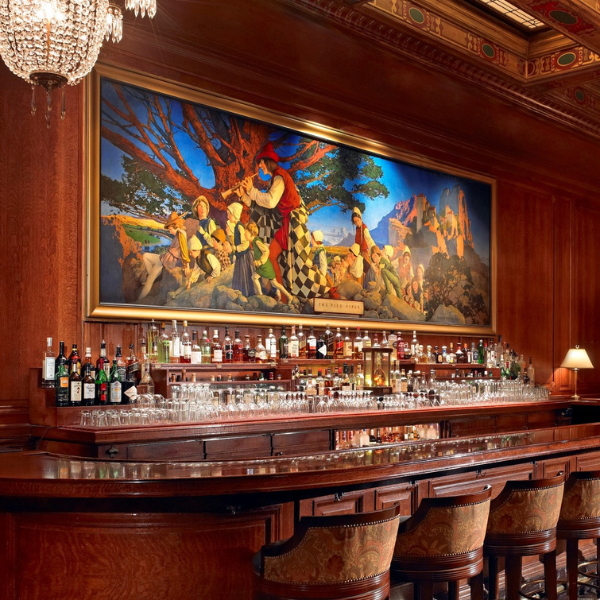 |
The Palace Hotel shares with visitors and guests some of San Francisco's best-loved art, as well as newly purchased and commissioned works. Two of the more well-known artists with works at the hotel are Maxfield Parrish and Antonio Sotomayor. The Pied Piper of Hamelin was commissioned for Maxfield Parrish to paint for the hotel’s reopening in 1909. Inspired by the legendary tale dating back to 1284, the painting depicts the Pied Piper leading citizens out of the town of Hamelin, Germany. Featuring 27 expressive faces—including 24 children, 2 women, and the Pied Piper—the work is colorful and extremely life-like. Today, The Pied Piper is displayed in its namesake bar. The Palace Hotel also houses two murals by San Francisco artist Antonio Sotomayor, who immigrated to California from Bolivia in 1923. Sotomayor’s "Lotta Panel" depicts San Francisco's favorite actor, Lotta Crabtree, and the "Emperor Norton Panel" immortalizes the city's infamous character, Emperor Norton I, self-proclaimed Emperor of the United States and Protector of Mexico. Sotomayor was the hotel’s chief artist for a time and became famous for his works found throughout San Francisco, from the opera to restaurants and bars. When asked how he felt about the locations of some of his works of art, he responded: “Why paint if you don't want people to see it? … A bar is one of the best ways to reach a large number of people. And think of how much more accessible it is than a museum!" |
Riverside, California
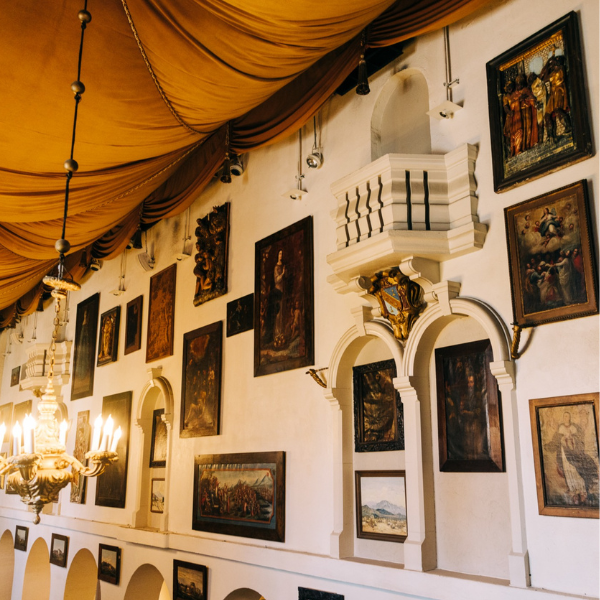 |
Any stroll through the richly appointed Spanish Art Gallery of The Mission Inn Hotel & Spa in Riverside, California, makes for a magical evening amid an exquisite art collection. The historic hotel, designated a National Historic Landmark by the U.S. Secretary of the Interior, houses a vast art collection, including sculptures, paintings, stained-glass panels, wood carvings, ceramics, metalwork, and architectural elements. The art represents various themes, with a focus on California's history and religious artifacts. Several spaces were purpose-built to house certain artwork, such as the St. Francis Chapel, featuring seven stained-glass windows by Louis C. Tiffany, and an ornate Mexican Baroque-style altar screen. The historic hotel’s Spanish Art Gallery was designed in 1914 to display a vast collection of paintings from around the world, collected by the Miller hotelier family. The room itself is a work of art: regal 17th-century European décor in a warm palette of gold offers sophistication. The venue features a grand marble staircase with wrought iron, a ceiling richly draped in a gilded canopy, and a centuries-old door of carved pomegranate. The Spanish Art Gallery can accommodate up to 150 guests for private events. Guests of The Mission Inn Hotel & Spa can enjoy the collection throughout the property, as new pieces can be found around every corner. Guests can explore the art throughout the property and visit the Mission Inn Museum, which offers daily tours. The collection's sheer volume and diversity make it unique, reflecting Frank A. Miller's belief that art should be accessible to everyone. Visitors can enjoy unprecedented access to priceless works of art that were collected with deep respect and admiration for their histories and craftsmanship. |
St. Augustine, Florida
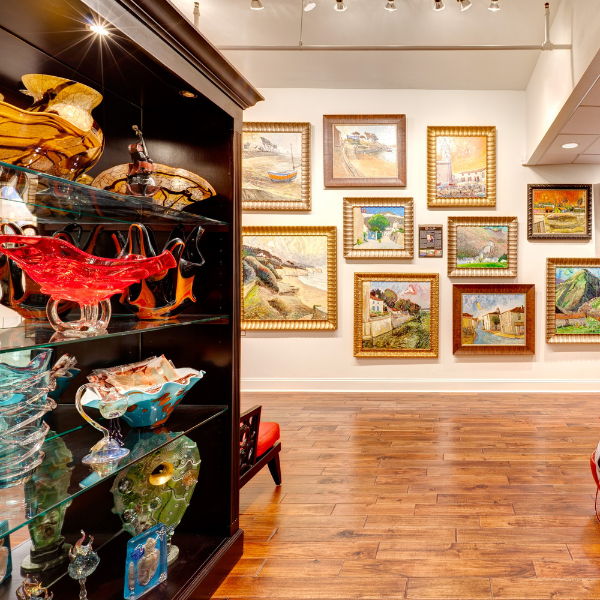 |
The ambiance of Casa Monica Resort & Spa in St. Augustine, Florida, exquisitely joins together the hotel’s historic roots with a bohemian aesthetic to being open, curious, and adventurous. The hotel’s founder, Richard C. Kessler, collected masterful works in oil, blown glass, and porcelain from around the world, and the hotel’s Corporate Director of Galleries has bolstered the Kessler aesthetic by upholding a high bar for what is exhibited at the resort and the resort’s gallery, The Grand Bohemian Art Gallery. Oil paintings, sculpture, and antiques may be enjoyed in the resort’s restaurants, hallways, and guestrooms. One of the resort’s most impressive series is the Five Women of Saint Augustine by Marianne Lerbs. This series depicts the history of St. Augustine through the lives of five courageous women, who successfully and resiliently made their marks on the city. In November 2022, Kessler issued an open call to emerging artists across the United States to search for “The Next Original.” Out of more than 1,800 artists, Mr. Kessler handpicked nine finalists to display their work. All nine finalists were named The Next Original Artists of 2022 after inspiring Mr. Kessler in their own unique way. Not only is their work hung in the Grand Bohemian Gallery, but guests can also experience monthly artist receptions and live painting experiences with the winners as part of the resort’s Artist in Residence program. Visit the Casa Monica Resort & Spa and its Grand Bohemian Art Gallery to see the collection. With a reservation, gallery staff will create a memorable walk-through of the hotel and gallery collection for hotel guests and art patrons. Private gallery events may also be arranged. |
Milwaukee, Wisconsin
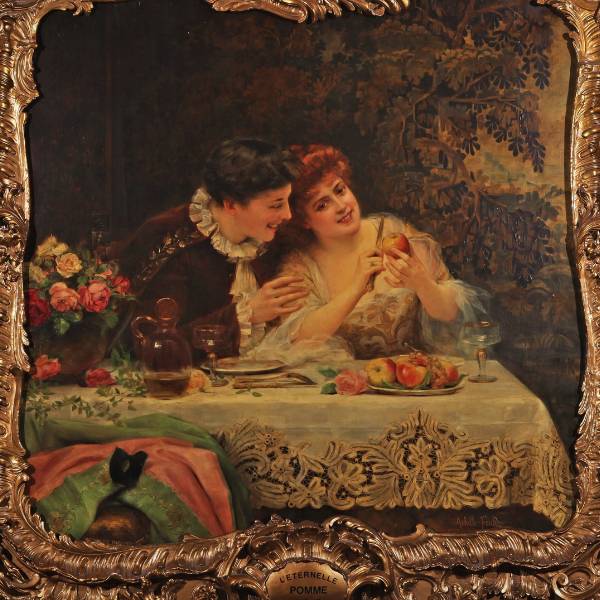 |
The Pfister Hotel’s art collection is reportedly the largest Victorian art collection of any hotel in the world. Collected by Guido and Charles Pfister, the historic Milwaukee, Wisconsin, hotel keeps at least 80 pieces of 19th and early 20th-century Salon and Genre works on permanent display. Drawn from a variety of styles and subject matters, and gracing the setting for which they were selected, the collection offers guests a rare glimpse into the tastes and sensibilities that enlivened the Belle Epoque. Visitors can explore and learn about this art collection with a self-guided tour, or through a scheduled tour with the hotel’s current Artist-in-Residence. As guests enter, they are greeted by the two bronze statues called The Pikemen dating back to the opening of the hotel, standing on each side of the entrance. In the lobby are the well-known Pfister Lions, today called “Dick” and “Harry.” Charles Pfister used to introduce them as “Mason” and “Jefferson” to his guests. Moving through the hotel, nearly all of the art embraces a style that was very much in vogue in the early 1900s and complements the hotel’s history. The landscapes, portraits, and sculptures are distributed throughout the hotel, and serve as a welcome invitation at the top of each stairway or down a long corridor. Currently, the hotel offers self-guided tours of the art collection. |
San Francisco, California
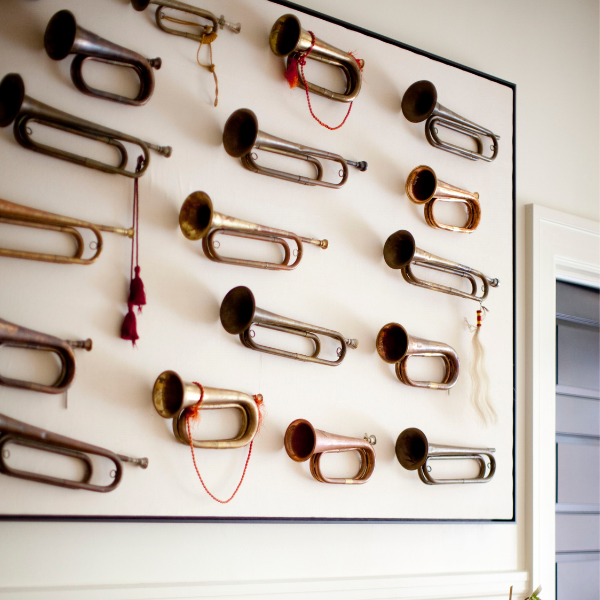 |
The art program at the historic Inn at the Presidio and The Lodge at the Presidio in San Francisco, California, provides guests with immersion into the history of the Presidio. The maps, paintings, artistically arranged artifacts, and photographs were curated and exhibited to celebrate the Inn and Lodge's history as army housing. The program seamlessly integrates “found objects” from the park, and highlights original artwork throughout the property, creating a museum-like ambiance. Original artworks, displayed in common areas and guestrooms, evoke the landscapes, energy, and history of the Presidio and San Francisco. The art program encourages guests to engage with their surroundings, resulting in a memorable and enriching experience that highlights the talent of the local art community. The Lodge features noteworthy pieces such as a handcrafted circular art piece made from chert, serpentine, and stones used by the Native American Ohlone Tribe. Additionally, a lobby collage entitled A Soldier's Story showcases items a soldier may have collected, while expansive murals depict the Presidio's forest and beaches, creating a visual feast for guests to enjoy. At the Inn, guests can admire a diverse range of artistic mediums on display, including paintings, sculptures, and mixed-media installations. A collage of historic bugles is on display in the lobby, and in the living room, there is an interactive art piece that allows guests to scan QR codes to access information about exploring the park and the Presidio’s natural surroundings. |
Boston, Massachusetts
|
|
Not only is this Boston hotel a work of art, designed by renowned Boston architect William Gibbons Preston, but the XV Beacon also distinguishes itself with an extensive art collection of its own. The prized pieces of its collection include an ancient Roman mosaic; canvases by America’s foremost portraitist Gilbert Stuart, whose images of President Washington are impressed into the nation’s imagination; works by contemporary abstract painter Maggi Brown, and much more. This collection has given the XV Beacon its status as a hidden gem in the Boston arts and cultural scene. Specially commissioned works by Martha Lloyd, Joe Greene, Tony Evanko, Ben Freeman, and other artists hang in XV Beacon’s guestrooms. The hotel explains, “When travel stress hits, nothing grounds the soul like art.” In Mooo…. Restaurant’s wine cellar, a stunning Roman mosaic dating back to the fourth to the fifth century A.D. depicts two cavorting deer amidst flowers, amphorae, and fish. At this storied hotel, old becomes new again. XV Beacon’s art collection reflects self-awareness of its place in history and, simultaneously, its commitment to environmentally sound policies and practices. |
San Francisco, California
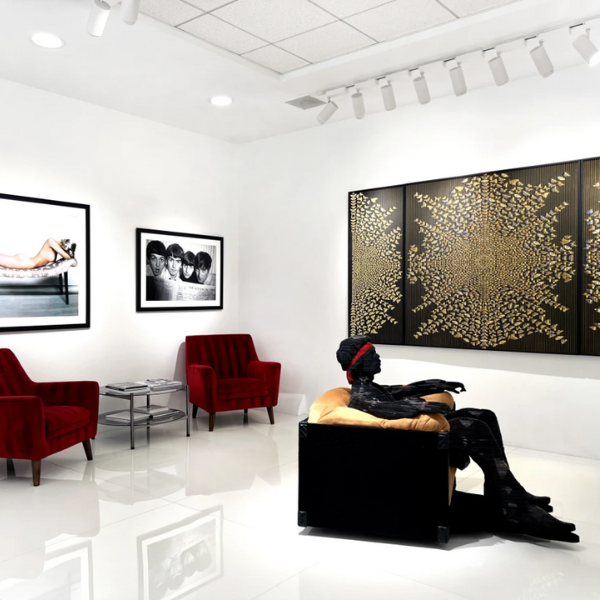 |
The Fairmont Hotel San Francisco’s Gefen Gallery space brings a modern contemporary aesthetic to the opulent, iconic glamour of this historic hotel. Located within the main lobby, the gallery offers 2,500 square feet of rotating exhibition space from carefully curated artists. Established in 2018 by Effi Shoua, Gefen Gallery has quickly become a prominent fixture in the San Francisco art community. The gallery is known for its exclusive and innovative exhibitions featuring both emerging and internationally acclaimed contemporary artists. The gallery space at The Fairmont Hotel San Francisco is the secondary location of Gefen Gallery, which has a flagship location at Union Square in San Francisco. The Gefen Gallery location within this historic hotel is open Sunday-Friday from 10 a.m. to 6:30 p.m. and Saturdays from 10 a.m. to 9 p.m. |
Nashville, Tennessee
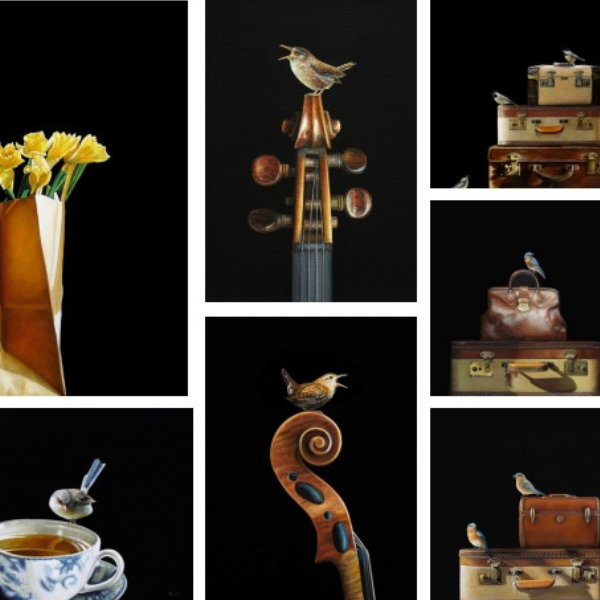 |
Considered one of Nashville’s finest architectural treasures, the soaring Beaux-Arts lobby of The Hermitage Hotel, originally designed by Tennessee architect James E.R. Carpenter, boasts a hand-painted glass ceiling featuring figures from Greek and Roman mythology, such as Bacchus, Janus, Pan, and Mercury. This craftsmanship involves multiple layers of paint on glass, in a four-step process, including firing in a high-temperature kiln. Beyond the lobby, art is displayed throughout the hotel in guestrooms and suites, on elevator landings, and in the Grand Ballroom. The hotel’s curators and managers looked to its past to inform its design. For example, the hotel’s extensive archive of letters and postcards was pulled from to create new art installations on each floor, bringing guests on a historical journey as they experience the hotel. A charming bird theme is woven throughout the hotel, inspired by a hand-painted bird discovered on the vaulted ceiling of the Veranda room. Such subtle storytelling elements inspire a sense of exploration and invite guests to discover more about the hotel’s history in a modern, approachable way. Of course, women’s history is also on display at this hotel, which was the headquarters for both anti- and pro-women’s suffrage factions in Tennessee—the last state to vote to win passage of the 19th Amendment. Many of its guestrooms and suites feature curated items harkening back to the fight for suffrage. In 2020, The Hermitage was designated a National Historic Landmark by the U.S. Secretary of the Interior. |
Atlanta, Georgia
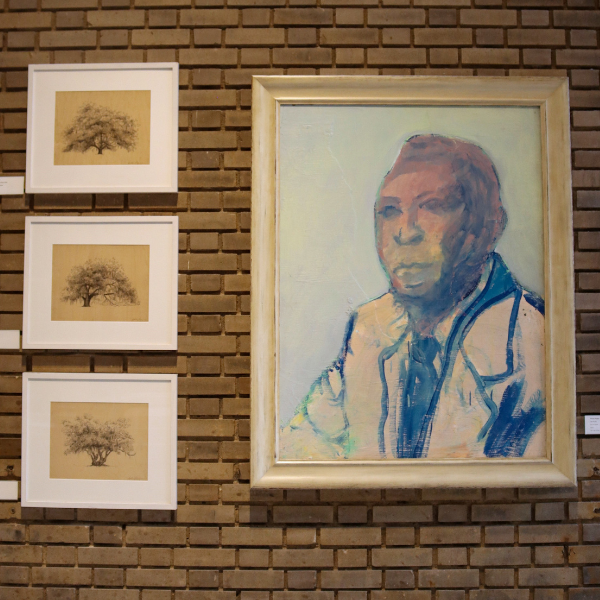 |
The Georgian Terrace in Atlanta, Georgia, is a member of Sotherly Hotels' collection of independent boutique hotels around the Southern United States. Through its Sotherly Annual Scholarship, and partnership with the Savannah College of Art and Design (SCAD), Sotherly Hotels invests in local artists and provides them with a space to exhibit their work. The Georgian Terrace displays 17 original paintings/drawings, all created by the art students of SCAD Atlanta. Each piece of timeless art is extremely unique and tells its own story. One of the hotel’s most impressive pieces is The Porter by Thony Aiuppy, who earned an MFA from SCAD in 2013. The colorful and eclectic piece hangs in the hotel lobby, along with 16 other pieces of fine art. Mr. Trevor Hollis, the hotel’s Sotherly host and historian, conducts tours of the property, available upon request, from noon to 8 p.m., Wednesday through Sunday. Two other historic Sotherly hotels, The DeSoto in Savannah and The Whitehall in Houston, Texas, also exhibit SCAD students’ art through this same partnership. |
Savannah, Georgia
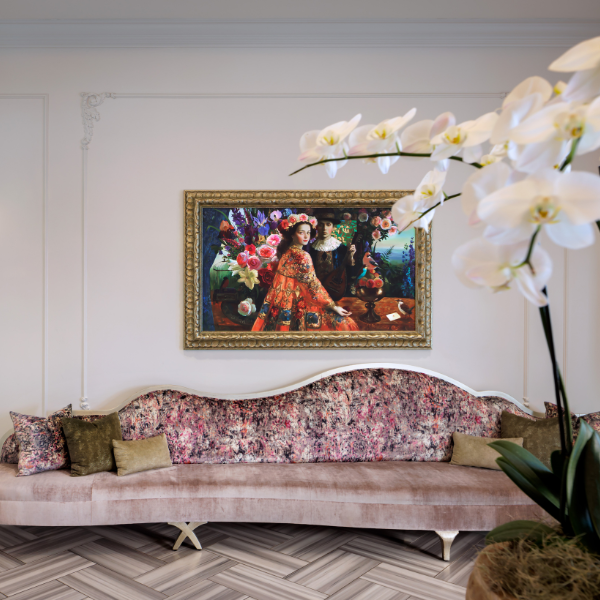 |
Built on the site of a coal power plant dating back to 1912, the JW Marriott Savannah Plant Riverside District in Savannah, Georgia, is not only home to a signature Grand Bohemian Gallery, but is a gallery in and of itself, featuring curated and commissioned work from world-renowned artists. From paintings and murals to sculptures and statues, imperial Bösendorfer pianos, and even museum-quality installations and historical artifacts, each piece is hand-selected to draw guests deeper into owner and developer Richard C. Kessler’s vision. In November 2022, Kessler issued an open call to emerging artists across the United States to search for “The Next Original.” Nine finalists were named The Next Original Artists of 2022 after inspiring Mr. Kessler in their own unique way. Not only is their work hung in the Grand Bohemian Gallery, but guests can also experience monthly artist receptions and live painting experiences with the winners as part of the hotel's Artist in Residence program. The energy-themed Generator Hall, the previous site of the historic Georgia Power Plant, features not only traditional artwork but also art in the form of natural science. On display are museum-quality geodes, citrines, and amethysts measuring up to 9 feet, as well as fossils and meteorites. The crown jewel of the hotel, Chromina Joule, sits center-stage in Generator Hall. The 135-foot-tall chrome dinosaur created by paleopathologist, David Trexler, is an exact replica of one of the largest dinosaurs in the world that was found in 1860 in Colorado. The art comes to life at this historic hotel through interactive tours offered Wednesday through Sunday. |
Grand Rapids, Michigan
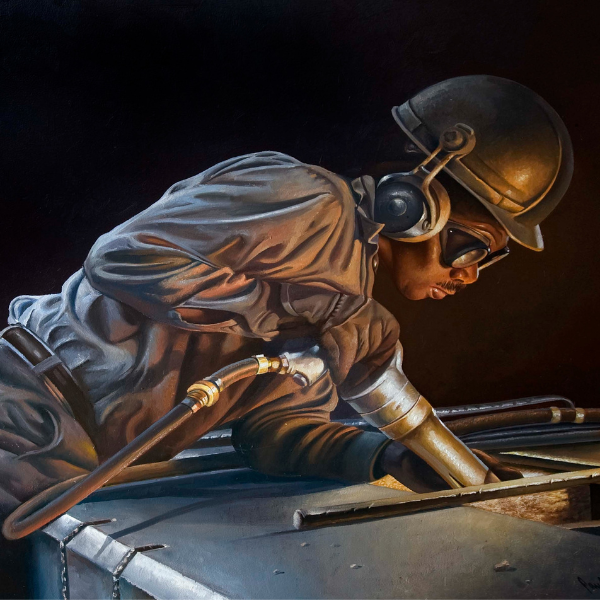 |
The Amway Grand Plaza Hotel, Curio Collection by Hilton, offers guests and visitors a chance to experience the America at Work collection by artist Paul Collins. This Grand Rapids, Michigan, hotel’s art collection is comprised of 25 paintings depicting scenes of railroad workers, engineers, astronauts, U.S. Marines, farmers, and more. The art series was inspired by the questions Collins fielded about life and culture in the United States when he lived abroad. One of the most impressive Collins’s pieces on display at the Amway Grand Plaza is a painted mural titled The Bond, which depicts the interrelationship between Amway’s founders, their families, the independent distributor organization, employees, and consumers. The seven-foot mural was originally a gift from the independent Amway Distributors Association, commemorating Amway’s first 25 years. The collection was originally unveiled in 1982 at the U.S. Department of Labor and was then gifted to the historic hotel by the Amway Distributors Association. Collins sees America at Work in the people whose labor impacts each other's daily lives, and lifts Americans up. Collins said of his America at Work series, “In society today, we seem to regard the celebrities or untouchables as our heroes. As a result, those who surround us slip through the cracks and seldom receive the title ‘hero.’ I decided to shine the light upon those people.” The collection is on permanent display in public areas, including meeting and event spaces, at the Amway Grand Plaza. Guests are invited to enjoy the art while exploring the hotel or attending a meeting or event. |
Berkeley, California
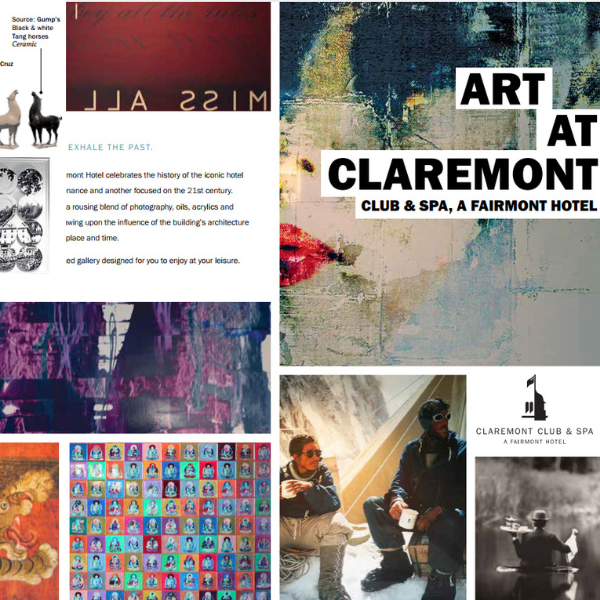 |
The Claremont Club & Spa, A Fairmont Hotel celebrates its history with one eye on its origins and another focused on the 21st century. Its halls boast a rousing blend of photography, oils, acrylics, and three-dimensional pieces drawing upon the influence of the building’s architecture, and the unique attributes of the place and time. The resort gallery at the Hillary Tenzing Room was established to share the vision of Richard Blum, owner/partner of Claremont Club & Spa and founder of the American Himalayan Foundation. It is named after Sir Edmund Hillary and Sherpa Tenzing Norgay, the first people to summit Mt. Everest on May 29, 1953. The gallery displays personal artifacts from Mr. Blum’s collection, as well as photography and artwork honoring the people and beauty of the Himalayas. The diverse collection includes photographs, sculpture, ceramics, acrylic and mixed media on canvas, and hand-blown glass. An antique Tibetan door from Kathmandu (artist unknown) represents Tenzing Norgay, who was widely known as the “Tiger of the Snows.” Photos by Marion Brenner explore the intersection between native wetland plant communities and working agricultural landscapes. Guests and visitors are welcome to explore the collection during their stay. |
Bethlehem, Pennsylvania
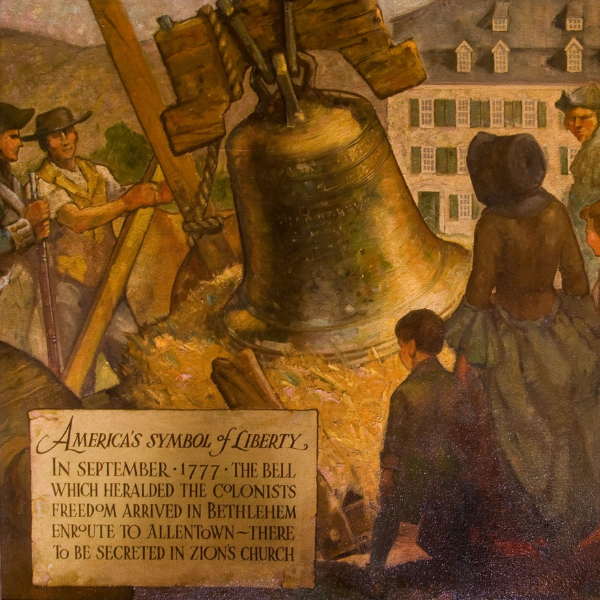 |
Historic Hotel Bethlehem in Bethlehem, Pennsylvania, is home to eight murals painted by George Gray in 1936. Seven of these murals currently hang proudly in the Mural Ballroom, and the eighth hangs directly outside of the Mural Ballroom. In 1936, the American Hotels Corporation took over the management of Hotel Bethlehem and commissioned George Gray to paint the history of Bethlehem for this hotel. It was part of a vast new mural program for the corporation's upscale hotels. Measuring up to 30 feet wide, the artworks became minor landmarks in their cities. The murals painted for Historic Hotel Bethlehem depict stories related to the historic city’s past: “The Walking Purchase (1737)"; “The Founding of Bethlehem (1741)”; “General Benjamin Franklin’s Visit (1755)”; “The Liberty Bell in Bethlehem (1777)”; “General Casimir Pulaski (Father of the American Calvary) visit (1778)”; “Asa Packer & the founding of Lehigh University (1865)”; “Iron & Steel Industry”; and an eighth mural of a map of The Walking Purchase. Gray painted more than 200 murals in his lifetime, most of which were commissioned by the American Hotels Corporation. Today, only 26 of his hotel murals survive. The murals at Historic Hotel Bethlehem are the only set in its original location and one of only two complete surviving sets painted by Gray. |
Santa Fe, New Mexico
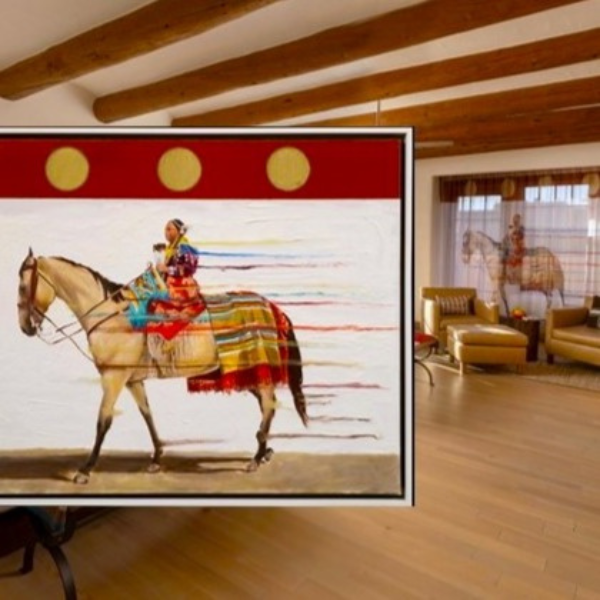 |
For over 100 years, La Fonda on the Plaza has set the standard for honoring artistic traditions. Art created by local artisans has been part of the hotel’s iconic history since the hotel’s inception and helped establish Santa Fe as a top destination for art and culture. Paintings by the best Pueblo artists were acquired in the historic hotel’s early years, and the hotel has supported Santa Fe’s famed Indian Market by frequently acquiring work by Native Americans and other artists for the hotel. Not only does original art hang in every guestroom, but every piece has a connection to the people who designed, built, and owned the hotel. Among the artists who contributed is Gerald Cassidy, who painted ten dramatic canvases depicting life in the Frontier West, plus a map of the Southwest that still hangs in the New Mexico Room. Paul Lantz painted handsome murals depicting life in a Mexican village, as well as two large tableaux, located in the ballroom, and the other in the stairway leading up to it. With a team of 50 volunteer docents, La Fonda offers one of the most comprehensive art and history tours in the city on Wednesdays through Saturdays, which is free and open to the public. La Fonda has long supported local artisans, and for decades, has provided a free venue for local artists to create art, sell their work, and engage with visitors to the hotel. The hotel’s popular Artist in Residency Program runs throughout the year and helps support emerging artists. In August 2023, the hotel published the second edition of its art history book, In Every Room: A Story of the Art. |
Washington, Pennsylvania
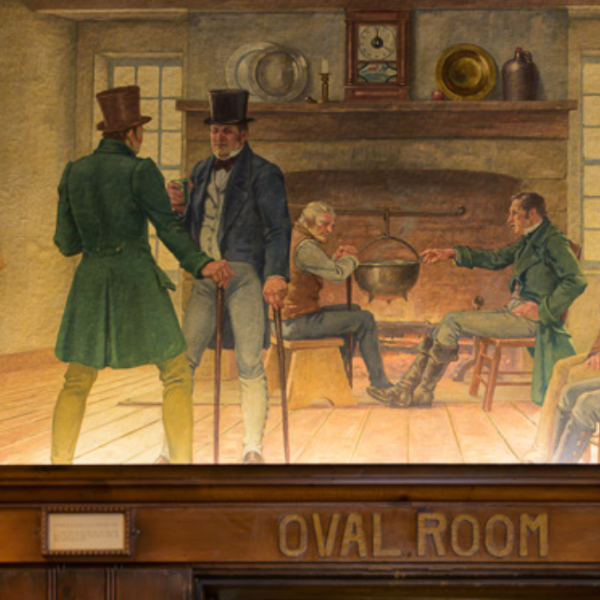 |
In the 1930s, the popular George Washington Hotel in Washington, Pennsylvania, commissioned a prominent local artist named Malcolm Parcell to create six murals for The Pioneer Room, a dining venue at the popular hotel. Depicting artistic interpretations of the National Road and Washington, Pennsylvania, Parcell’s artwork became regarded as an important cultural attraction in just a matter of months. The murals show idealized depictions of six American icons: “The Conestoga Wagon,” “Pony Express,” “Pack Horse," “Stage Coach,” “Lafayette visits Washington,” and “David Bradford's Escape.” Malcolm Parcell painted the murals over the course of six months, during which time he was a guest of the hotel. Each mural is presented with a handwritten caption describing the artwork. The murals are the largest and longest-lasting set of murals by Parcell, who won the 1925 Carnegie Prize for Art. The George Washington Hotel in Washington, Pennsylvania, was inducted into Historic Hotels of America in 2023—a century after its founding in 1923. |
Sonoma, California
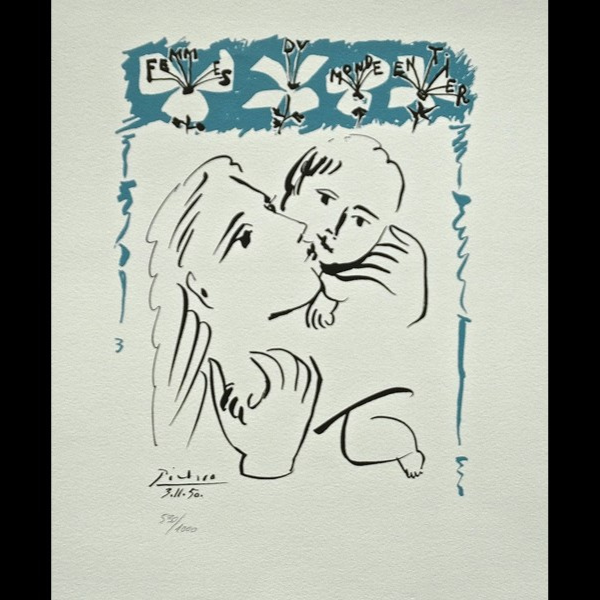 |
The Fairmont Sonoma Mission Inn & Spa, in partnership with Salon d’Art, presents the lobby exhibition: Impressionism to Pop Art: 100 Years of Printmaking (1897–1997). The Fairmont Mission Inn & Spa is in Sonoma, California, and was inducted into Historic Hotels of America in 2014. The retrospective showcases etchings, lithographs, and pochoirs (stencils) by Renoir, Picasso, Warhol, and others. These artists brought an extraordinary level of innovation and expertise to the art of printmaking, making every work in this exhibit a significant contribution to the development of modern art. Their works are now some of the most collected and coveted in art history. The exhibition includes The Bather series by Renoir, the Flowers series by Warhol, and “Dove” by Picasso. The years between 1897 and 1997 were one of the most dynamic periods in Western printmaking. During these 100 years, new subjects, styles, and techniques helped establish the modern impulse in prints. Guests and aficionados are invited to enjoy self-guided tours of the artwork using Salon d’Art’s revolutionary beacon technology. This state-of-the-art system uses any IOS mobile device; the viewer can connect instantly and seamlessly to information about the artworks on display. Each beacon will be able to push designated information regarding its related artwork directly to a mobile device, allowing the holder to move from artwork/beacon to artwork/beacon, and automatically receive the designated info relating to each artwork. |
Jackson, Wyoming
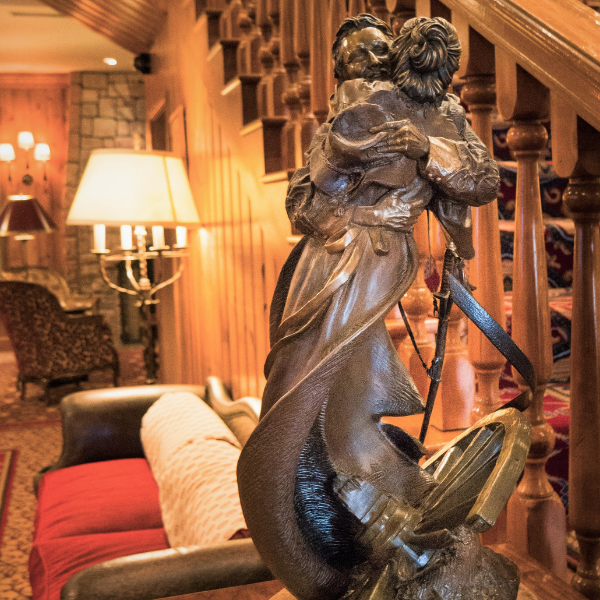 |
The Wort Hotel in Jackson, Wyoming, displays over 175 pieces of original contemporary and traditional Western-themed art, valued at over $1.2 million. The collection is defined by its sculptured bronze works, acrylics, and oil paintings. The Wort Hotel is especially proud of its hand-carved, Western-themed wooden doors, which are attached to eight guestrooms. Art is around every corner at The Wort Hotel. Notably, it contains the largest collection of Ray McCarty pieces, 50 in total. Highlights from the collection include 13 original Lyle Waggoner sculptures, 50 Ray McCarty paintings, and 12 illustrations by John Clymer. The hotel also has works by Gerry Metz and Joe Velazquez. Art collector and The Wort Hotel’s owner Bill Baxter says of the collection, “From our standpoint, this is a tribute to the importance and history of The Wort Hotel, that we connect it authentically with the West and the experience of the cowboy and cowgirl and the American Indian and the landscape...it just seemed appropriate to us to amplify those connections with beautiful, original Western art.” The artwork is spread throughout the hotel, in public spaces, the bar, and restaurant, as well as select guestrooms. These guestrooms have original artwork, as well as custom furnishings and bedding, in accordance with the guestroom’s theme. Additionally, the Ray McCarty artwork ties into the hotel’s gambling history. The hotel features a self-guided walking tour with photos and descriptions of key pieces of art. A brochure provides an overview of the artists, as well as the names of each piece featured at the hotel. This is a free tour available to any guests who stop into the hotel to have a look. |
Dallas, Texas
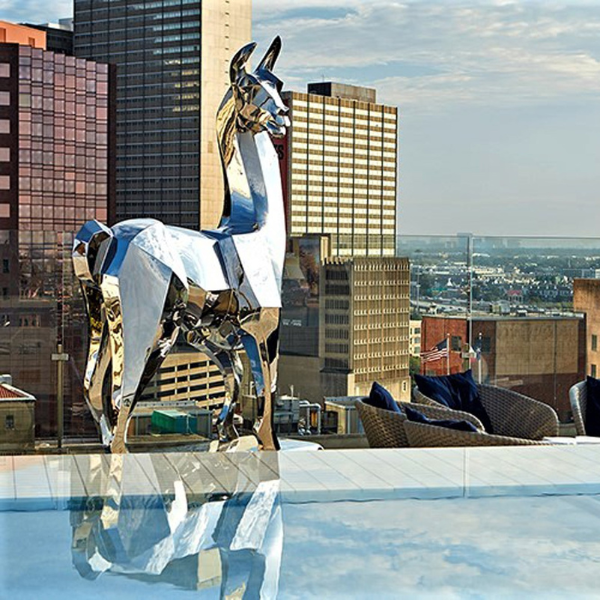 |
The Statler is a Midcentury Modern Dallas, Texas, landmark with an art collection valued at over $1.3 million. The collection includes sculpture, a panoramic mural, and photographs by artists including Jack Lubin and Brad Oldham. The Statler’s art collection is noteworthy because much of it was original to the hotel but was lost when the hotel was sold in 1988, only to be rediscovered in 2013. One lost-and-found piece is a painting by Jack Lubin that was once displayed in the former Empire Room. This painting was covered up in 1988, but rediscovered in 2013, professionally restored, and carefully transferred to the lobby area behind the front desk. On the 19th-floor rooftop pool is Llinda Llee Llama, a sculpture by Brad Oldham, which pays homage to the real-life Llinda Llee, a llama who enjoyed being paraded around the streets of Dallas, riding in limos, and visiting sick children in the late 1950s and 1960s. She is The Statler’s Brand Ambassador and has been an ongoing, iconic part of the hotel’s style and art integrations. Miniature replica statues can be found in each guestroom. The Statler went to great lengths to restore its lost artwork in the 2010s, and guests at the hotel today can enjoy works of art that were almost lost forever. |
Anchorage, Alaska
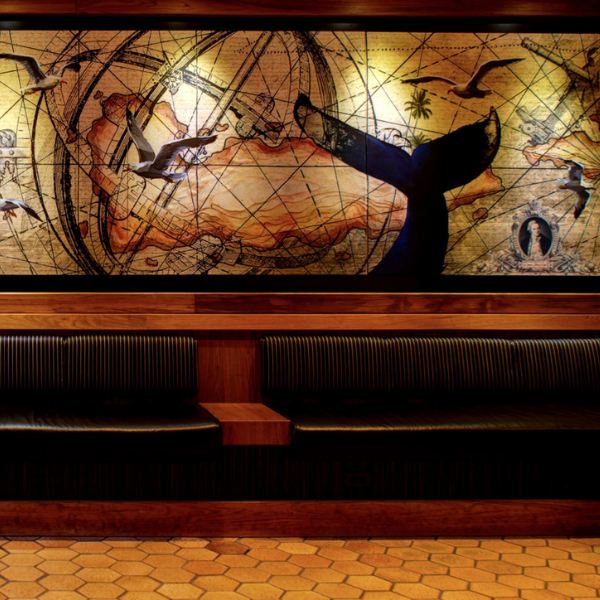 |
Upon arriving at the Hotel Captain Cook in Anchorage, Alaska, guests and patrons alike are greeted by inviting and historical décor illustrating the voyages of British explorer and cartographer Captain James Cook. Three of these major voyages took him around the southern tips of Africa and South America, to Easter Island and, on his final voyage, along Alaska’s majestic coastline. In June of 1778, while looking for a Northwest Passage to the Hudson Bay, he and his crew on the HMS Resolution dropped anchor in Turnagain Arm, right within sight of the spot where the Hotel Captain Cook stands today. A much sought-after experience for both the art enthusiast and the novice art lover, the Hotel Captain Cook offers walking tours of their expansive private art collection. Featuring paintings, drawings, and sculptures of subjects like historical sailing ships, Cook on his excursions, and the Indigenous people who encountered Cook, the hotel's art collection provides guests with a glimpse into the history of Cook’s voyages. In addition to the hotel’s architecture itself, unique art pieces like stained glass, paintings, woodwork, and sculpture continue to tell this story with inspired detail. Pieces of the collection can be viewed in common areas and are also prominently featured in well-appointed dining spaces, lining pristine hallways, and in other instances throughout the hotel. |
Kohala Coast, Hawaii
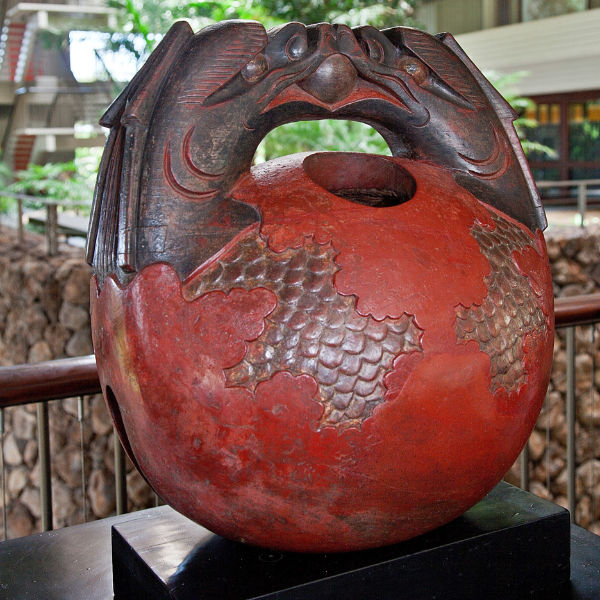 |
Several “firsts” are part of the recorded history of the Mauna Kea Beach Hotel on the Island of Hawaii. It was the first resort on Hawaii Island, the first golf course on the island, the first (and only) hotel in Hawaii developed by Laurance S. Rockefeller, and the first hotel in Hawaii to win awards from the American Institute of Architects in 1967 and again in 2007. But what is often overlooked is that this beachfront beauty was also the first American hotel to completely and meticulously incorporate authentic works of indigenous art into its design ethos. Rockefeller’s handpicked team of experts scoured Pacific Rim countries, Melanesia, Asia, and Polynesia. They returned with wooden carvings from New Zealand and adorned shields from Guinea, gold-gilded prayer disciples from Thailand, ornate Japanese tansu chests and bronze Indian dowry chests, and a larger-than-life 12th-century pink granite Buddha Shakyamuni, the collection's most notable, and noticeable, piece. The much-heralded art collection includes quilts of Hawaii, each with more than one million stitches, and beautifully pounded and dyed Hawaiian kapa, or barkcloth. The hotel’s extensive collection is found throughout its public spaces, with unrestricted, open-air access for the past 58 years. In 2022, Mauna Kea Beach Hotel partnered with two local organizations, Red Dot Goods and Mana Up, to further celebrate local artists and their work. Art of Mauna Kea coffee table books are available in every guestroom and for purchase at Mauna Kea’s gift shop. A free Art Tour is available each Saturday at 10 a.m. for guests and local visitors alike. Unable to visit but curious? Tour the collection from afar by listening to the podcast about the collection. |
“Discover and experience the many magnificent art collections located within and around many Historic Hotels of America,” said Lawrence Horwitz, Executive Vice President, Historic Hotels of America and Historic Hotels Worldwide. “Support for artists and endowments to acquire and sustain art collections has been a tradition of many of the founders and builders of historic hotels; fortunately, this tradition continues through the dedication of current ownership and their passion for making it easy for guests of these iconic and legendary hotels to experience some of the finest art collections across the United States of America—while staying at a historic hotel.”
Read more:
2023 Top 25 Historic Hotels of America® Most Historic Golf Courses
The 2023 Top 25 Historic Hotels of America Most Magnificent Ceilings and Domes
The 2023 Top 25 Historic Hotels of America Most Magnificent Gardens
The 2023 Top 25 Historic Hotels of America Where Women Made History
The 2023 Top 25 Historic Hotels of America in Film and Television History
The 2023 Historic Hotels of America Top 25 Afternoon Teas






















